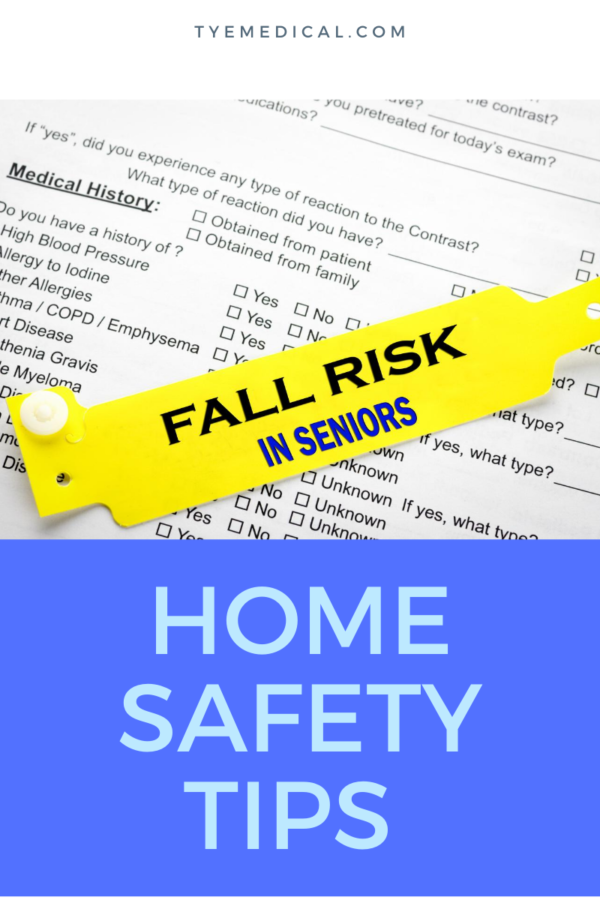Aging in Place: How Your Parents Can Live at Home Longer
Sep 14th 2020
We’re getting older every day. As we come to terms with our own aging bodies, we soon realize that our parents are getting older too. You might be wondering about their future needs and if aging in place is right for them – or even possible. A 2018 AARP survey reveals that 76% of Americans age 50 and older prefer to live in their current home as they age. If your parents feel the same way and want to live at home for as long as possible, then they’ll need some help preparing. Below you’ll find some practical steps you can take to help them achieve their goal.
 1. Talk to Your Parents About Aging in Place
1. Talk to Your Parents About Aging in Place
The most important step is to keep communication lines open with your parents. Have a conversation – or several – about their wishes and needs. It’s best to start early so you have plenty of time to prepare and gradually make necessary changes.
During these conversations, make listening your top priority. Learn what’s important to them and understand what they want. Every person has different priorities and concerns. Seniors in particular often worry about things like home maintenance, housekeeping, safety, lack of independence, or feeling lonely in their later years.
When you understand their deepest needs and concerns, you can prepare to address these issues from the beginning. If your parents have their biggest needs met and feel safe, then they’ll have a greater sense of wellbeing which makes aging in place more sustainable.
2. Prepare for Emergencies
You and your parents will need an action plan for emergencies. The plan may vary depending on your location and your parents’ current physical and mental abilities. Since their condition might change over time, you’ll need to revise the plan to account for this.
What’s most important is that the emergency plan is clear to you and to them. It must be simple and periodically reviewed to keep it fresh in their minds. Also, it’s a good idea to make the necessary information easily accessible for your parents. For instance, you can post a copy on the refrigerator or near the phone.
Here are some emergency situations to prepare for:
- Natural disasters like tornadoes, earthquakes, floods, fires, hurricanes
- Lockdowns (in the building or neighborhood)
- Inability to reach the phone and call for help
- Can’t get a vital prescription renewal (missed doctor appointments)
- 3 days of non-perishable food
- Flashlight and batteries
- Clean drinking water for at least 3 days
- First aid kit
- Mask and gloves
- Extra medications
Having some protocols in place will not only ease your mind but will also make your parents more comfortable and less stressed.
 3. Address Home Safety Concerns
3. Address Home Safety Concerns
The main objective here is to pay attention when you’re visiting your parents and observe their habits and abilities. Do you see any safety concerns that must be addressed while they’re aging in place? Don’t think of it as policing your parents, but instead realize that you’re looking out for their welfare. Even if an issue seems minimal, know that things will likely change over time. Continue to monitor potential issues with their best interests in mind.
At some point you might need to adapt the home or their activities out of concern for their safety. Talking freely with your parents about current and future changes often helps them transition to a new way of doing things.
Top 3 Basic Safety Concerns While Aging at Home
Falls
Falls are the leading cause of injury among senior adults in the U.S., and those over age 65 have the highest risk, according to the Center for Disease Control. While it’s important that you keep your parents’ safety in mind, you also want them to continue living as autonomously as possible.
So, rather than restricting their activities too much, you can take steps to help them live their lives at home with greater peace of mind.
Here are some simple but effective ways to minimize fall risk:
- Install grab bars inside the shower stall or bathtub
- Install grab bars next to toilet
- Install a hand-held shower nozzle
- Provide a shower seat
- Use non-slip mats in bathtub and on shower floors
- Keep the stairs clear (and declutter home)
- Remove small rugs (prevent slipping)
- Install lights and handrails on all staircases
- Ensure home is well lit
Burns
Many people over age 65 continue cooking at home as they age in place. For some people, they might safely continue for the rest of their lives. But it’s not that way for everyone. It’s important to pay attention to your parents’ abilities and recognize when it’s no longer safe for them to cook alone.
It’s common for elderly parents to accidentally burn themselves by touching hot burners or pans and even spilling boiling liquid on themselves. Sometimes cooking poses a fire risk, especially when using a gas stove or cooking with oil. Understand your parents’ cooking habits and observe them in the kitchen from time to time. Be ready to make other arrangements if cooking at home is no longer safe.
Poisoning
Accidental poisoning can cause illness or death and is possible among seniors over 65 who are aging in place. As we age, our memory begins to slip, which is especially true when dementia or Alzheimer’s sets in undetected.
When elderly parents aren’t thinking clearly, they might accidentally take medication they’ve already had or become confused about how much to take. Additionally, they might not remember to check carbon monoxide detectors or might expose themselves to too many fumes while using cleaning products. Again, these are largely due to cognitive issues and fuzzy thinking.
But you can help you parents live independently and safely by addressing these known safety concerns ahead of time. Here are some things you can do to mitigate these risks:
- Talk to the pharmacist about helpful ways to label medications
- Ask pharmacy to prepare medications in pre-dosed pill packets
- Install and maintain a carbon monoxide detector
- Keep only minimal (and safer) cleaning products on hand
4. Help Your Parents Stay Connected as They Age in Place
A lack of companionship or loneliness dramatically affects a senior’s emotional and physical health. Talk with your parents about their companionship needs and schedule time to visit them regularly. If your relationship is long-distance, be sure to call often by phone or even Skype (if someone is available to help them with the technology).
If your parent needs more companionship than you can provide, then consider talking to other family and friends about scheduling visits with your parents. This will also help you keep a closer watch over your loved ones even when you’re not able to be there. Assistance from family and friends will also provide a support system for you as you support your parents. This makes aging in place more viable for everyone long term.
Additionally, your parents might enjoy connecting with family and friends on social media platforms like Facebook. You or another family member can setup a profile for them and teach them the basics. A project like this can also help you connect with each other as well!
 5. Understand In-Home Care Options
5. Understand In-Home Care Options
Aging in place requires a plan for basic daily needs that might become more difficult or unsafe over time. At some point, your parents might need some assistance with necessities like:
- Meals
- Dressing
- Bathing
- Mobility
- Housekeeping/laundry
With some forethought and planning, at the right time you’ll be able to arrange for individual services like grocery delivery, meal delivery, housekeeping, or even adapt the home for mobility needs.
However, the time might come when more regular personal care is necessary for things like bathing and managing illness. You’ll want to understand in-home care options whether part time or full time. Be watchful and in close communication with your parents to determine when their needs are changing, then you can provide the specific services they require for wellness and quality of life.
7. Learn About the Cost of Aging in Place
It’s not always less expensive to age at home, because it depends on your parents’ specific needs. Talk with in-home care providers to help you and your parents understand pricing for their services. It’s also helpful to consider the cost for in-home safety modifications and home renovations. Once you have this information, you can make an informed decision at the right time.
It’s also important to have a conversation with your parents about available resources to help pay for potential in-home care and home costs. Financial assistance options are available for those who qualify.
As you plan for the future, realize there might come a time when you need more support from others who know the challenges and rewards of caring for an aging parent. Reach out through social media and other online or local support groups to get the encouragement and empathy you need.
 Caregivers, Lighten Your Load with LivDry Incontinence Products
Caregivers, Lighten Your Load with LivDry Incontinence Products
If you help your loved one with frequent incontinence underwear or adult diaper changes, then you know how costly and time consuming it can be. Our LivDry products are made to be used as part of a two-piece system that allows you to change only a super absorbent pad with each soiling instead of throwing out the disposable diaper or underwear every time. This not only saves money throughout the day, but it also saves time and hassle for both you and your patient.

